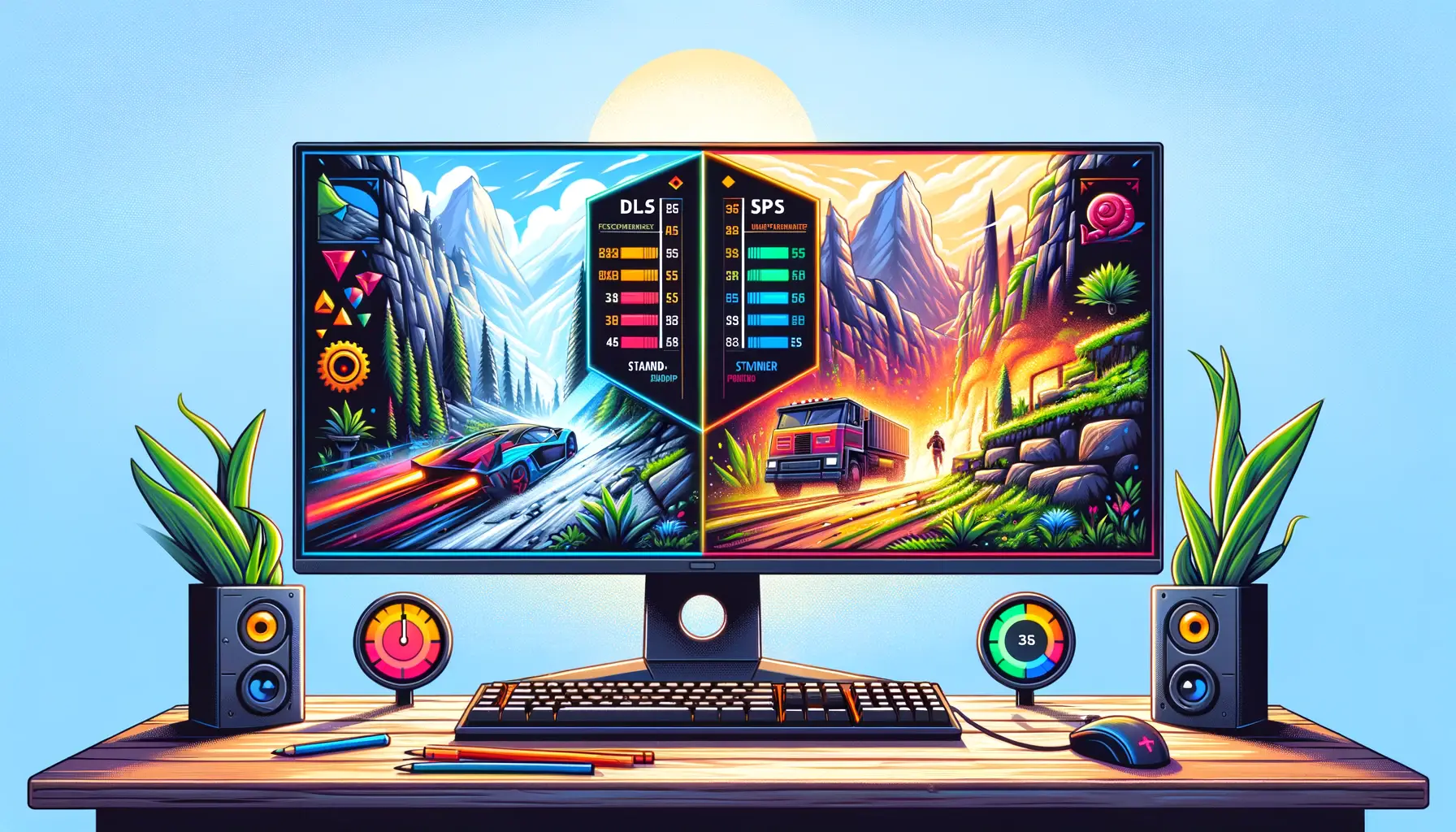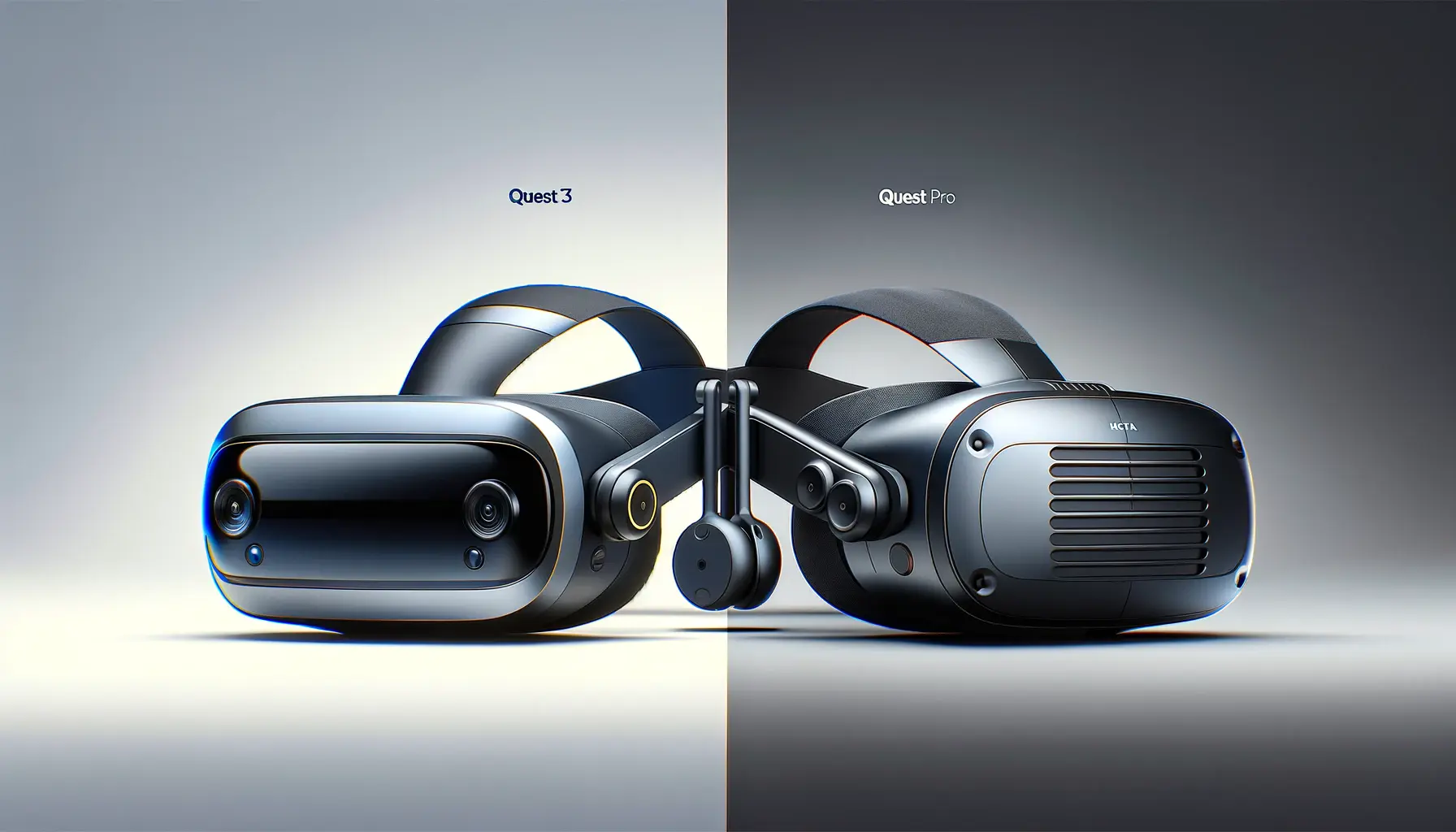The realm of virtual reality has been revolutionized with the advent of the Meta Quest 3, offering an immersive experience that is unparalleled.
Among the plethora of options it brings, multiplayer games stand out, providing a unique way for players to connect, compete, and collaborate in virtual spaces.
The Quest 3, with its advanced technology, has set a new standard for VR gaming, making it a prime platform for multiplayer adventures.
Multiplayer games on the Quest 3 are not just about the gameplay; they are about the shared experiences that forge lasting memories.
Whether it’s teaming up to tackle challenging quests, facing off in competitive arenas, or simply exploring virtual worlds together, these games offer something for everyone.
The sense of presence and immersion that the Quest 3 provides enhances these experiences, making every moment spent in these virtual worlds feel real and impactful.
- Exploring the Best Multiplayer Games on Quest 3
- Social VR: Beyond Gaming
- Enhancing Multiplayer with Quest 3 Features
- Future of Multiplayer Gaming on Quest 3
- Optimizing Multiplayer Experiences for Quest 3
- Challenges in Multiplayer Game Development on Quest 3
- Building a Community Around Quest 3 Multiplayer Games
- Embracing the Future of Quest 3 Multiplayer Gaming
- Quest 3 Multiplayer Games FAQs
Exploring the Best Multiplayer Games on Quest 3
Immersive Co-op Adventures
Cooperative games on the Quest 3 offer players the chance to embark on epic adventures together.
Titles like “Dungeons of Eternity” and “Asgard’s Wrath 2” exemplify the depth and richness of co-op gameplay available.
These games not only utilize the Quest 3’s capabilities to create detailed and immersive environments but also encourage teamwork and strategy, making every victory that much more rewarding.
Players can explore vast dungeons, solve puzzles, and battle formidable foes, all while communicating and coordinating with their teammates.
The shared sense of achievement and camaraderie that comes from overcoming challenges together is a testament to the power of cooperative play in VR.
Competitive Multiplayer Experiences
For those who thrive on competition, the Quest 3 offers a variety of games that pit players against each other in high-stakes matches.
Games like “Population: One” and “Blaston” showcase the intense and exhilarating nature of competitive VR.
These games require not only skill and precision but also strategic thinking and quick reflexes, offering a competitive arena that is both challenging and rewarding.
Whether it’s battling it out in a futuristic shooter or outsmarting opponents in a VR duel, the Quest 3’s multiplayer competitive games provide a thrilling platform for players to test their mettle against others.
The immersive VR environment adds a layer of realism to the competition, making every match an unforgettable experience.
The Quest 3’s advanced technology and immersive VR capabilities offer a unique platform for both cooperative and competitive multiplayer games, providing rich, shared experiences that are both engaging and memorable.
Social VR: Beyond Gaming
The Quest 3 transcends traditional gaming, venturing into the realm of social VR, where the platform becomes a space for interaction, collaboration, and community building.
Unlike conventional multiplayer games, social VR focuses on creating and nurturing connections among users, offering a plethora of activities that go beyond the competitive aspects of gaming.
Within these virtual spaces, players can:
- Attend live concerts and events, experiencing the thrill of a live performance from the comfort of their own home.
- Participate in virtual meetups and workshops, fostering a sense of community and shared learning.
- Explore virtual worlds together, from realistic recreations of real-world locations to fantastical landscapes born from imagination.
Creating and Sharing in VR
The Quest 3 also empowers users to become creators within these social spaces.
With tools and platforms designed for VR, users can design their own environments, host events, and even create games.
This aspect of social VR not only enhances the sense of community but also encourages creativity and innovation within the VR ecosystem.
Examples of creativity in social VR include:
- Designing custom avatars that express individual identity and style.
- Building unique spaces for friends to gather, ranging from cozy virtual homes to elaborate fantasy settings.
- Developing interactive experiences and games that can be shared with the wider community.
Social VR on the Quest 3 represents a significant shift in how we perceive virtual spaces, emphasizing community, creativity, and shared experiences over competitive gameplay.
Enhancing Multiplayer with Quest 3 Features
The Meta Quest 3 is not just a platform for playing games; it’s a technological marvel that enhances multiplayer experiences with its cutting-edge features.
The integration of advanced hardware and software capabilities makes multiplayer games more immersive, interactive, and enjoyable.
Key features of the Quest 3 that enhance multiplayer gaming include:
- High-resolution graphics and smooth frame rates, making virtual worlds more vivid and realistic.
- Hand tracking and haptic feedback, providing a more intuitive and tactile interaction within games.
- 3D spatial audio, enhancing the sense of presence and immersion in multiplayer environments.
Real-Time Interaction and Communication
One of the standout features of the Quest 3 is its ability to facilitate real-time interaction and communication among players.
With integrated voice chat and gesture recognition, players can communicate and interact in a natural and fluid manner, as if they were physically together.
This level of interaction brings a new dimension to multiplayer games, making teamwork and strategy more effective and engaging.
Additionally, the Quest 3’s support for cross-platform play expands the potential player base, allowing friends to connect and play together regardless of the hardware they own.
This inclusivity strengthens the multiplayer community and ensures that players can always find others to join in their virtual adventures.
The Quest 3’s innovative features not only enhance the gameplay experience but also foster a more connected and interactive multiplayer community.
Future of Multiplayer Gaming on Quest 3
The future of multiplayer gaming on the Quest 3 looks incredibly promising, with advancements in VR technology and game development continuously pushing the boundaries of what’s possible.
As the platform evolves, we can expect to see multiplayer games that are more immersive, interactive, and socially engaging than ever before.
Emerging trends and technologies that will shape the future of multiplayer gaming on Quest 3 include:
- Augmented Reality (AR) Integration: Combining VR with AR to create mixed reality experiences that blur the line between the virtual and real world.
- Advanced Social Features: Enhanced tools for communication and interaction, such as improved avatars and virtual social spaces, making virtual gatherings more lifelike.
- Cloud Gaming: Leveraging cloud technology to stream high-quality VR games directly to the Quest 3, reducing the need for local storage and processing power.
Expanding the Multiplayer Genre
As the Quest 3 continues to grow in popularity, we can also anticipate a diversification of multiplayer genres and experiences.
Developers are beginning to explore new types of multiplayer games that go beyond traditional genres, incorporating elements of education, fitness, and virtual tourism.
This expansion will not only attract a wider audience to the Quest 3 but also enrich the multiplayer ecosystem with a variety of unique and engaging experiences.
Furthermore, the integration of artificial intelligence (AI) in multiplayer games could revolutionize how we interact with virtual environments and characters.
AI-driven NPCs (non-player characters) could become indistinguishable from human players, offering more dynamic and unpredictable gameplay experiences.
This could lead to multiplayer games where players form alliances, compete, and interact with both real and AI-driven entities in complex, evolving virtual worlds.
The future of multiplayer gaming on the Quest 3 is not just about technological advancements but also about creating a diverse and inclusive platform where anyone can find an experience that resonates with them.
Optimizing Multiplayer Experiences for Quest 3
Creating an optimal multiplayer experience on the Quest 3 involves more than just impressive graphics and gameplay mechanics.
Developers must consider a range of factors to ensure their games are accessible, engaging, and enjoyable for all players.
This includes optimizing performance, ensuring inclusivity, and fostering a positive community.
Strategies for optimizing multiplayer experiences on Quest 3 include:
- Performance Optimization: Ensuring games run smoothly on the Quest 3’s hardware, minimizing latency and maximizing frame rates for a seamless multiplayer experience.
- Accessibility Features: Incorporating options for players with different needs, including adjustable controls, subtitles, and colorblind modes, to ensure everyone can enjoy the game.
- Community Management: Developing tools and policies to maintain a positive and respectful gaming environment, including moderation tools and behavior guidelines.
Enhancing Player Engagement
Engagement is key to the success of multiplayer games on the Quest 3.
Developers can enhance player engagement by introducing regular updates, events, and challenges that keep the game fresh and exciting.
Community-driven content, such as custom maps and modes, also plays a significant role in sustaining player interest over time.
Moreover, leveraging the Quest 3’s social features to create a sense of belonging and achievement can significantly boost engagement.
Features like leaderboards, achievements, and in-game rewards not only motivate players to improve but also provide a platform for them to showcase their skills and accomplishments to the community.
Optimizing multiplayer experiences on the Quest 3 is a multifaceted approach that involves technical performance, accessibility, community management, and continuous engagement strategies.
Challenges in Multiplayer Game Development on Quest 3
While the Quest 3 offers a fertile ground for innovative multiplayer experiences, developers face several challenges in creating and maintaining these games.
Addressing these challenges is crucial for the success and longevity of multiplayer titles on the platform.
Some of the key challenges include:
- Network Latency and Stability: Ensuring smooth and responsive gameplay across different network conditions is critical for multiplayer games. Developers must implement efficient netcode to minimize latency and prevent disconnections.
- Balancing and Fair Play: Creating a balanced game environment that is fair and enjoyable for players of all skill levels is challenging. Developers need to continuously monitor and adjust game mechanics to maintain fairness.
- Content Creation and Updates: Keeping the game engaging over time requires regular content updates and new features. This demands significant ongoing development resources and creative input.
Addressing Player Behavior and Safety
Another significant challenge is managing player behavior and ensuring a safe gaming environment.
As multiplayer games on the Quest 3 often involve real-time interaction between players, issues such as harassment, cheating, and toxic behavior can arise.
Developers must implement robust moderation tools and community guidelines to address these issues effectively.
Creating a positive and inclusive community around a multiplayer game also involves fostering a culture of respect and cooperation among players.
This can be achieved through community events, recognition of positive behavior, and direct engagement from the game’s developers and community managers.
Ignoring the challenges of multiplayer game development on the Quest 3 can lead to a poor player experience, impacting the game’s success and the platform’s reputation.
Building a Community Around Quest 3 Multiplayer Games
The success of multiplayer games on the Quest 3 often hinges on the strength and engagement of their player communities.
A vibrant community not only supports the game’s longevity but also enhances the overall experience for its members.
Building and nurturing this community requires deliberate strategies and ongoing effort from developers.
Effective strategies for community building include:
- Engaging Directly with Players: Regular communication through social media, forums, and in-game announcements keeps the community informed and engaged. Developers can share updates, gather feedback, and celebrate community achievements to foster a closer relationship with their player base.
- Hosting Events and Competitions: Organizing in-game events and competitions can stimulate community engagement and excitement. These events offer players new challenges and the opportunity to showcase their skills, while also encouraging social interaction within the game.
- Supporting User-Generated Content: Allowing players to create and share their own content, such as custom game modes, maps, or avatars, can significantly enrich the game’s ecosystem. This not only provides fresh experiences but also empowers the community to contribute to the game’s development.
Leveraging Social VR Features
The Quest 3’s social VR capabilities offer unique opportunities for community building.
Features like virtual meetups, shared spaces, and live events can create a sense of belonging and community among players.
By integrating these social VR features into multiplayer games, developers can create more immersive and interactive community experiences.
Furthermore, recognizing and rewarding active community members can motivate others to contribute positively.
Implementing systems that highlight helpful, creative, or skilled players can encourage a culture of positivity and collaboration within the community.
A strong community is the backbone of any successful multiplayer game on the Quest 3. Through direct engagement, support for user-generated content, and leveraging social VR features, developers can build a thriving and supportive community around their games.
Embracing the Future of Quest 3 Multiplayer Gaming
The journey through the landscape of Quest 3 multiplayer games reveals a vibrant and evolving universe.
From the adrenaline-pumping arenas of competitive shooters to the collaborative quests in fantastical realms, the Quest 3 platform has proven itself as a formidable force in the VR gaming industry.
The fusion of cutting-edge technology with innovative game design has opened up new dimensions of interactive entertainment, where players are not just participants but integral components of the gaming narrative.
The Pillars of Quest 3 Multiplayer Success
Several key factors contribute to the success and appeal of multiplayer games on the Quest 3:
- Advanced VR technology that offers immersive and realistic gaming experiences.
- A diverse range of games that cater to different interests and gaming styles.
- Strong community support that fosters engagement, creativity, and collaboration.
These elements combine to create a multiplayer ecosystem that is dynamic, inclusive, and continuously growing.
The Quest 3’s ability to bridge the gap between virtual and real-world interactions has not only enhanced the gaming experience but also established a new standard for social connectivity in the digital age.
Looking Ahead: The Quest 3 Multiplayer Horizon
As we look to the future, the potential for Quest 3 multiplayer games is boundless.
With ongoing advancements in VR technology and a growing community of developers and players, the Quest 3 is set to redefine the boundaries of virtual gaming.
The exploration of new genres, the integration of AR and AI, and the expansion of social VR features are just the beginning.
The Quest 3 platform is poised to deliver experiences that are more engaging, more immersive, and more connected than ever before.
In conclusion, the Quest 3 multiplayer games represent the forefront of VR gaming, offering unparalleled experiences that are rich, varied, and deeply engaging.
As the technology evolves and the community grows, the Quest 3 will continue to be a beacon for innovation, bringing players together in ways we have only begun to imagine.
The future of Quest 3 multiplayer gaming is not just about playing games; it’s about creating a shared virtual space where imagination, interaction, and innovation converge.
Quest 3 Multiplayer Games FAQs
Explore the most common inquiries about multiplayer gaming on the Quest 3, providing insights into the best experiences the platform has to offer.
Top titles include “Walkabout Mini Golf” for casual play, “Asgard’s Wrath II” for RPG fans, and “The Walking Dead: Saints & Sinners” for action enthusiasts.
Yes, many Quest 3 multiplayer games support cross-platform play, allowing users to connect with friends on different VR devices.
Yes, the Quest 3 platform offers a selection of free multiplayer games, providing diverse experiences without any cost.
Quest 3 enhances multiplayer gaming with high-resolution graphics, hand tracking, haptic feedback, and 3D spatial audio for immersive play.
Quest 3 offers a wide range of multiplayer genres, including shooters, sports, RPGs, and puzzle games, catering to various player preferences.
Quest 3 multiplayer games typically feature integrated voice chat and gesture recognition for seamless in-game communication among players.
Many Quest 3 multiplayer games allow for user-generated content, enabling players to design custom game modes, maps, or avatars.
Developers implement various measures, including balanced game mechanics and anti-cheat systems, to ensure fair play in Quest 3 multiplayer games.











